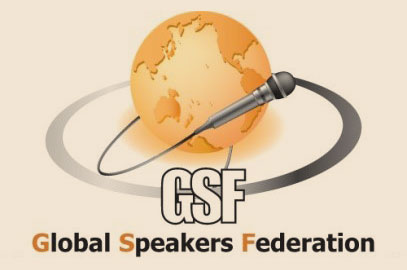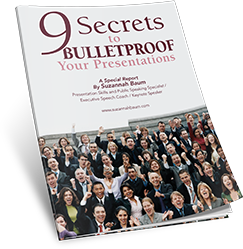Eve Ensler Breaks the “Rules” of Public Speaking
This 20-minute speech was forwarded to me by a very valued reader, who prefaced it with a simple “Wow! Check this!” And what I saw did not disappoint. Eve Ensler is known as the original creator of the Vagina Monologues and V-Day, a movement to stop violence against women and girls, which has so far raised $70 million to prevent violence and protect abused women. And after watching this video, now we can also get to know her as a passionate, intense speaker with a somewhat unconventional speaking style.
I’m going to assume that for many of the astute readers of this newsletter, you likely remarked on the same two issues that I did within the first minute of the speech: First, she’s sitting. Second, she’s got notes in her lap, which she refers to fairly often in the first 2 minutes, then minimally for the rest of the speech. This breaks some of the public speaking “rules” that we’re so familiar with: Stand up and move around, and don’t use notes (especially large papers stapled together). But what was also evident in the first minute of her speech was an intensity that caught my attention immediately, and made me want to hear more.
Are Speaking “Rules” Really Rules?
So let’s talk about this. She’s sitting. She’s using notes. She’s waving her notes around. How does that sit with you? I’ve always contended that public speaking is not a black-and-white topic. Most of us have seen the “How to” lists and know the “right” and “wrong” things to do when giving a presentation or speech. Ultimately, however, what really counts is what your audience gets from the speech. Yes, it’s about content. It’s about delivery. It’s about audience engagement. But HOW you choose to get your point across using these three requirements is certainly open to interpretation.
After watching so many speakers over the years, I’ve come to realize that good speeches do not always follow the rules, and some speakers simply have a more ‘unconventional’ style which doesn’t necessarily detract from them or their message. We saw this in a newsletter a few months ago with the fascinating speech by Sir Ken Robinson, who stood in one place throughout his speech, with minimal movement.
Eve Ensler has a huge stage to work with, but chooses instead to stay seated. She uses notes, which most speakers at TED don’t do. Is that wrong? Or does the fact that she gets her point across clearly and powerfully make up for these transgressions?
The Power Behind the Speech
Once we get over the feeling of “why won’t she stand up?” and “what’s with the notes?” we can look at some of the reasons why this speech is so powerful.
1. Stories, stories, stories. At about the 10-minute mark, the speech is composed almost entirely of stories. Fascinating, heart-wrenching, inspiring, sad, uplifting stories.
2. How she tells the stories. What I liked about how she told the stories was that she didn’t get overly emotional in order to make her point. I once told a sad-yet-uplifting story in a speech contest, and after coming in 2nd place, one of the judges approached me to say that I should have tried to shed a tear, or “put” a lump in my throat to make it more emotional. Which would have been terribly insincere. Eve goes through these stories with great speed and energy, letting them sink in but without becoming too heavy, dramatic or depressing. However, I can equally understand how some viewers may feel that she *should* have been more emotional and less matter-of-fact in telling these stories, especially given the very difficult subject matter. That’s the paradox of public speaking – what moves one person may not move another.
3. She leans forward, toward the audience, when making a point. So subtle, yet so effective.
4. Not afraid to show her feelings. When talking about the successes of her anti-violence movement, she shows great excitement. She doesn’t downplay her happiness or her pride in the accomplishments that she speaks of.
5. The all-important call-to-action: In speaking about how women are brought up only “to please,” she asks everyone in the audience to “change the verb from ‘to please’ to educate, empower, etc.”
Speech Ending — the Monologue Performance
She shakes up the end of the speech with a dramatic monologue. It certainly added colour to the speech, and it was nice to see her finally stand up, move around and let off the energy that must have been building inside her during her time on stage. However, I think the power of her speech lay in the content. The performance was simply an entertaining way to end the speech – although not quite as impactful.



